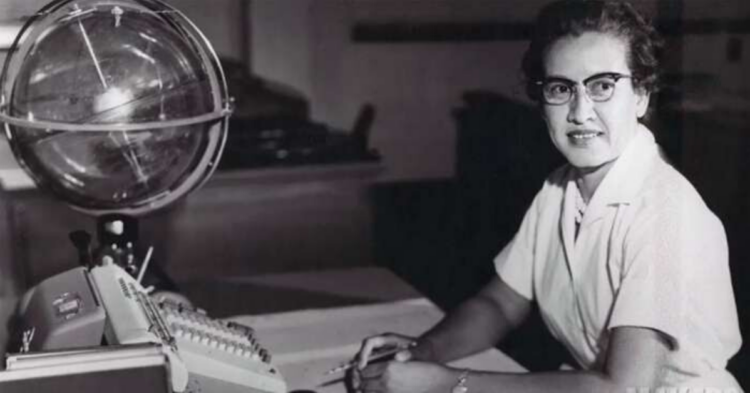Katherine Johnson loved to count, and in the end, her life counted to more people than she could ever know.
With little more than a pencil and her mind, Johnson broke through barriers and helped form America’s space program by being as indispensable as she was brilliant.
From an early age, Johnson was fascinated by numbers.

“I counted everything,” she later recalled . “I counted the steps to the road, the steps to the church, the number of dishes and silverware I washed…anything that could be counted, I did.”
Her curious mind carried her through school quickly, at a time when opportunities for African-American kids were slim. Pushed by her father to focus on her education, Johnson started high school at age 10, graduated at 14, and was a college grad by 18.
Johnson seemed destined to blaze a trail.

In 1939, she was selected as one of three black students to integrate West Virginia’s graduate schools and left her teaching job to enroll in West Virginia University’s graduate math program.
However, Johnson withdrew from that program to start a family, and for the next several years, she was a homemaker, raising three daughters.
Then, in 1953, she joined the National Advisory Committee for Aeronautics, predecessor to NASA.

The NACA employed a team of women specifically to do the “tedious” work of measuring and calculating wind tunnel test results. It called the women doing those calculations “computers.”
By 1953, NACA had started to look toward space, and Johnson was a perfect fit as a human computer.
As NACA morphed into NASA, Johnson was increasingly relied upon to perform highly complex, critical calculations.

While the astronauts got the headlines, the work of engineers and mathematicians on the ground made their journeys possible, and Johnson was one of NASA’s most reliable members, a veritable rock star of putting people into space and getting them back down to Earth safely.
Johnson personally calculated the trajectory for Alan Shepard’s journey into space, and before his historic first manned orbit of Earth, John Glenn requested that she check all the math IBM’s electronic computers had performed on the orbital equations.
“If she says they’re good, then I’m ready to go,” he said at the time.
Johnson’s greatest feat, by her own reckoning, was her work on the Apollo missions.

For the Apollo program, she helped sync up the lunar module with the orbiting command module, as well as mapping the moon’s surface ahead of the mission. Johnson later worked on the Space Shuttle and Landsat programs as well before finally retiring in 1986.
In 2015, President Obama awarded Johnson the Medal of Freedom, and in 2016, the film Hidden Figures , based on her life, was released in theaters with Taraji P. Henson portraying her on screen.
Tributes have been pouring in for Johnson following the news of her passing at age 101.

NASA administrator Jim Bridenstine called her “an American hero,” saying “Ms. Johnson helped our nation enlarge the frontiers of space even as she made huge strides that also opened doors for women and people of color in the universal human quest to explore space…At NASA we will never forget her courage and leadership and the milestones we could not have reached without her.”
h/t: NASA

















































